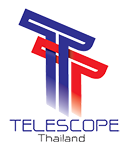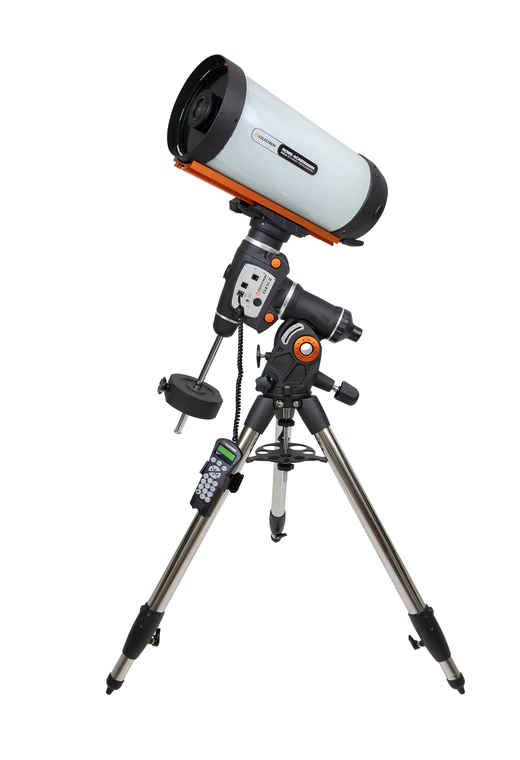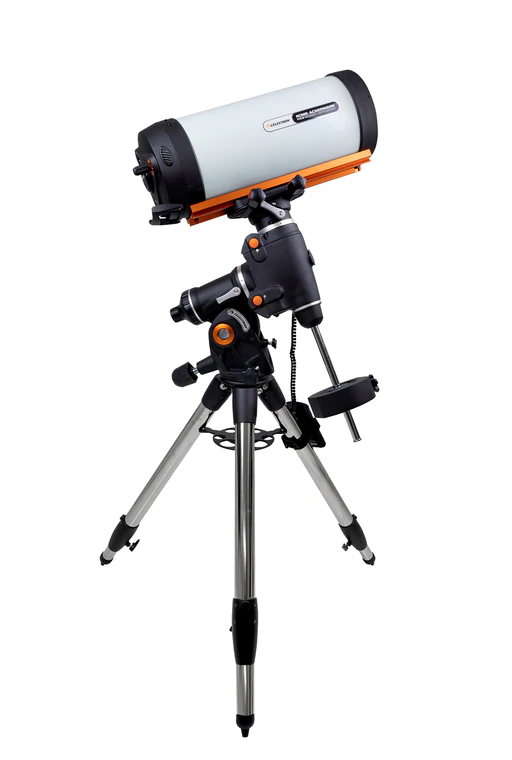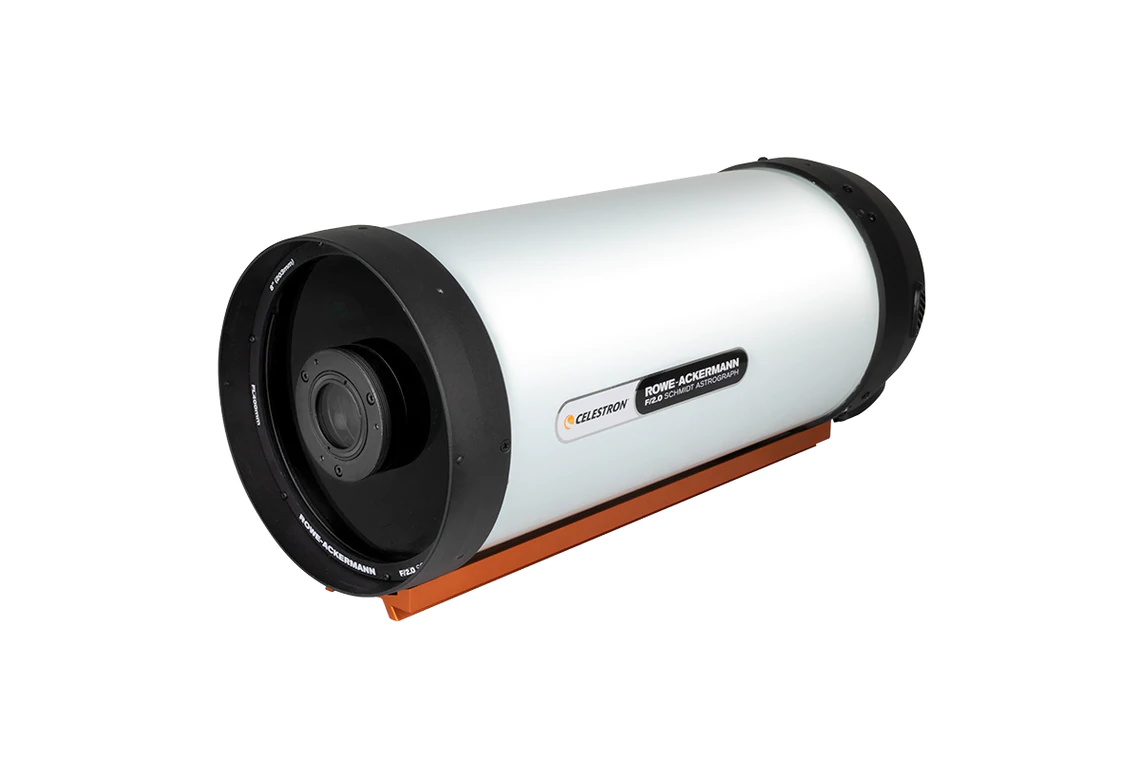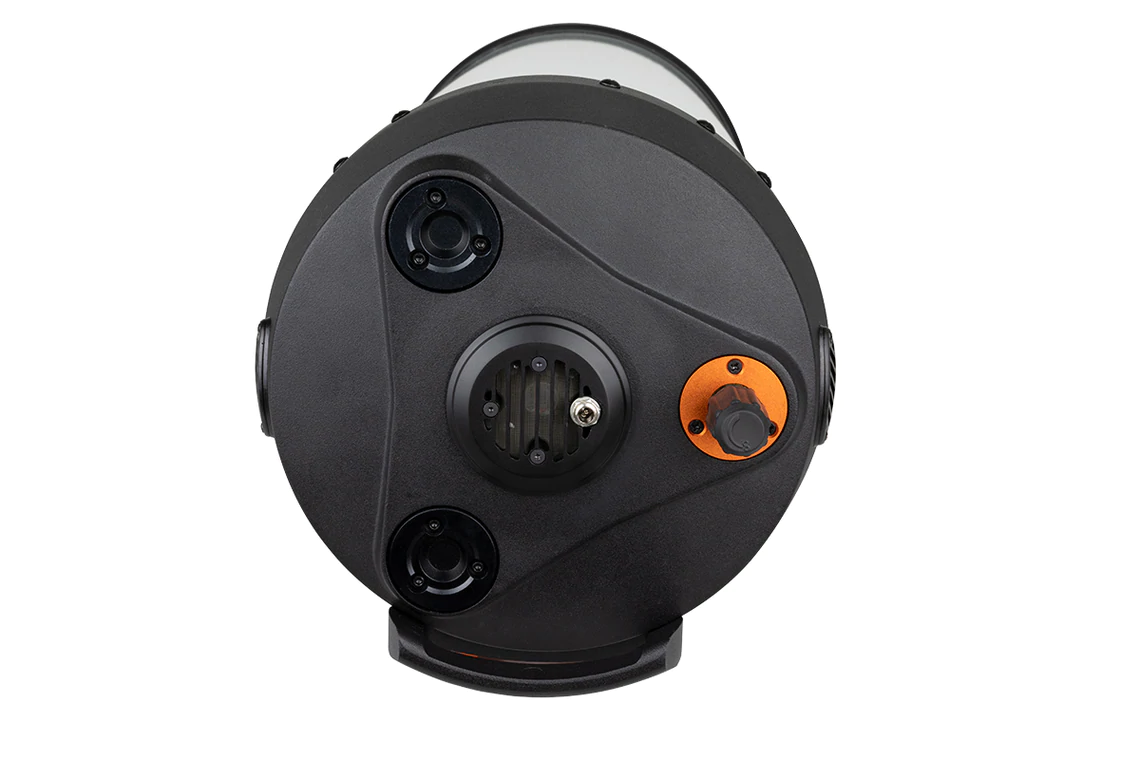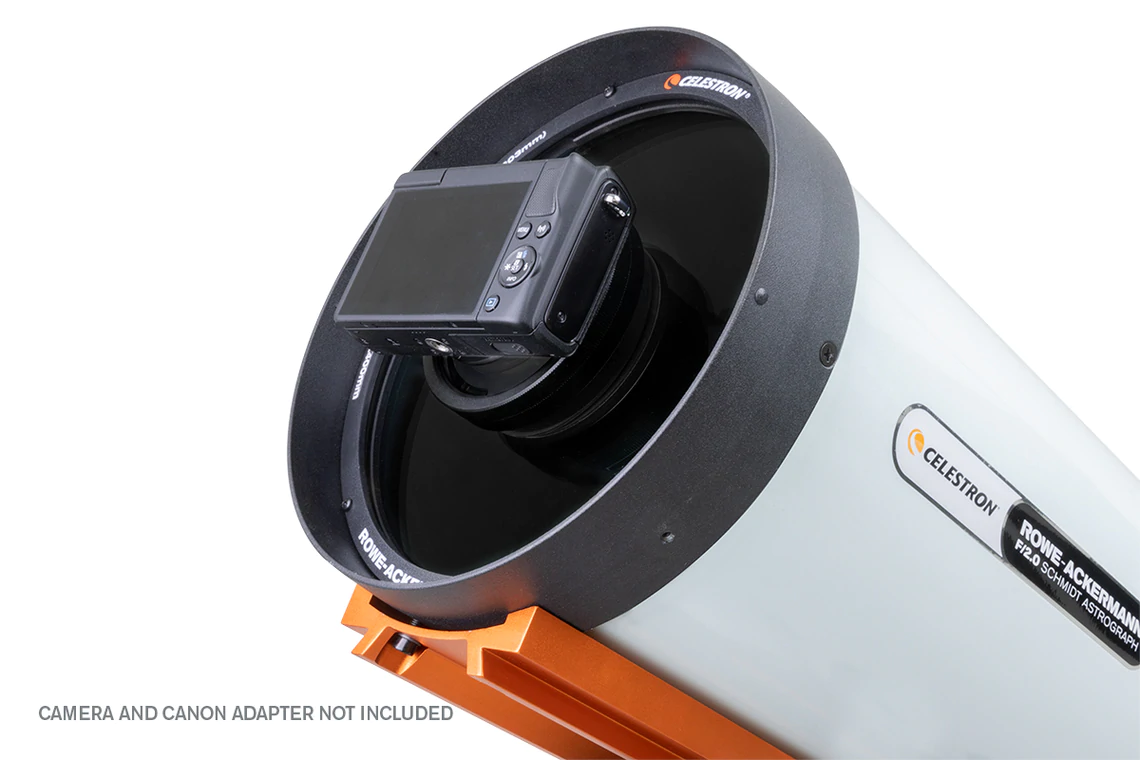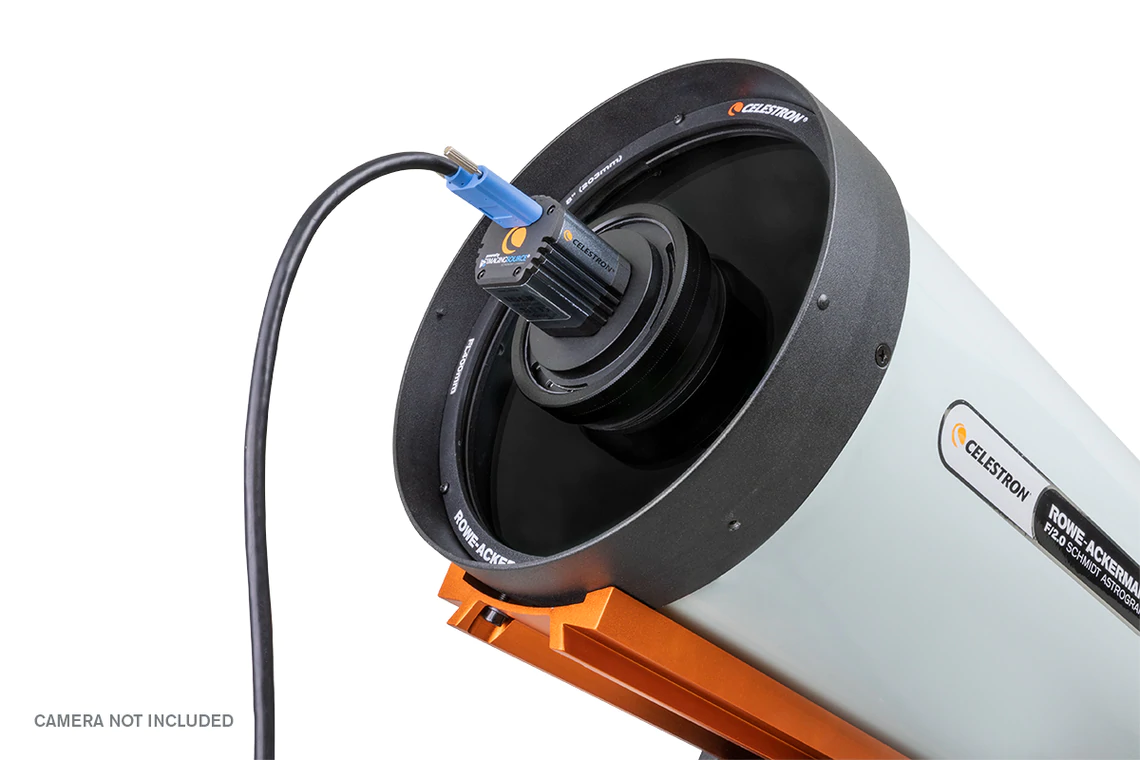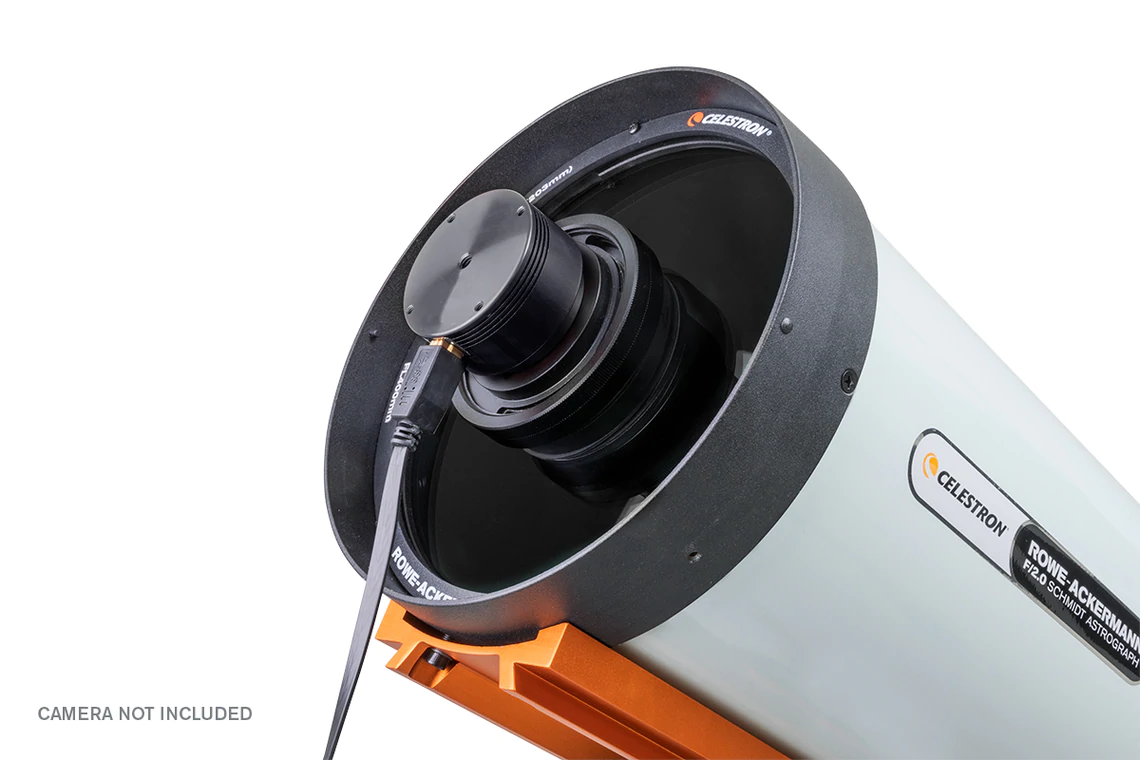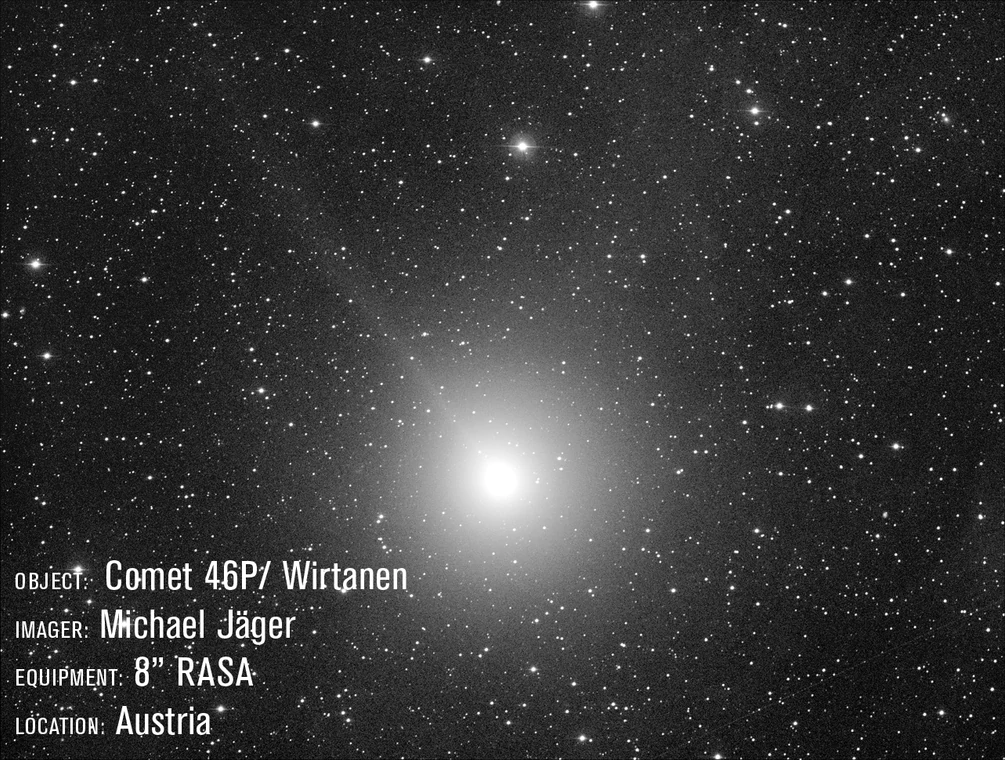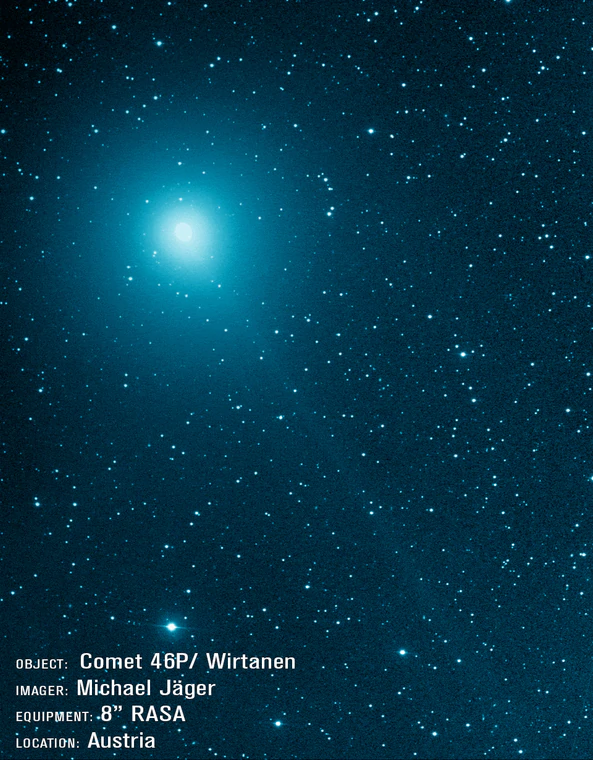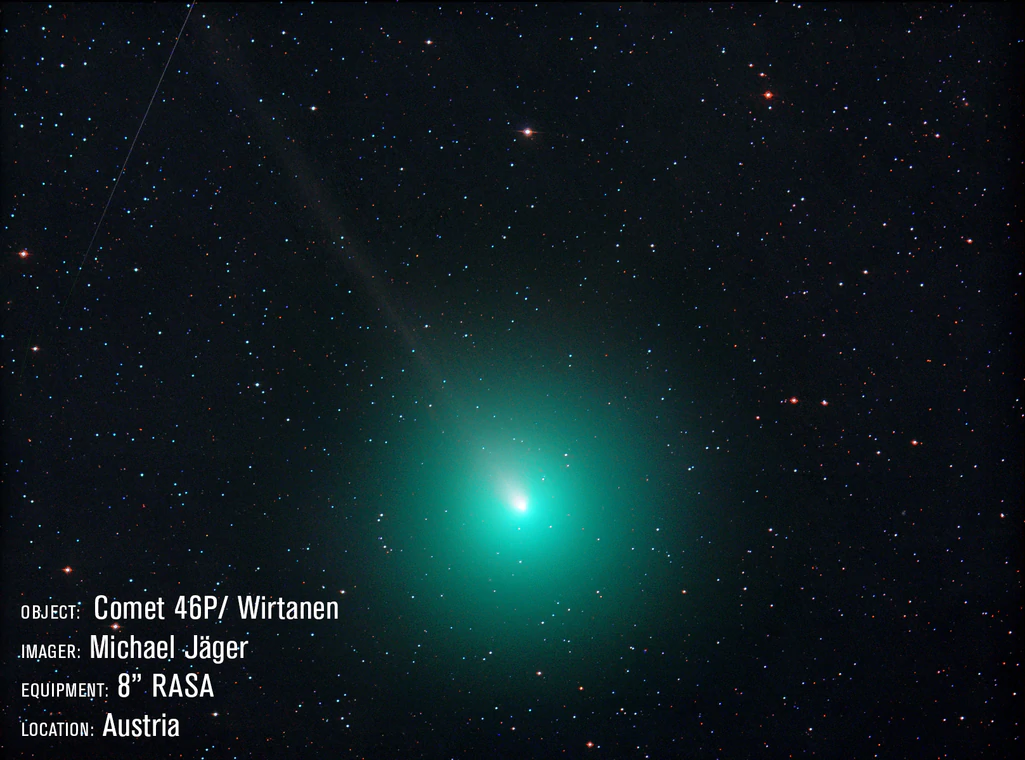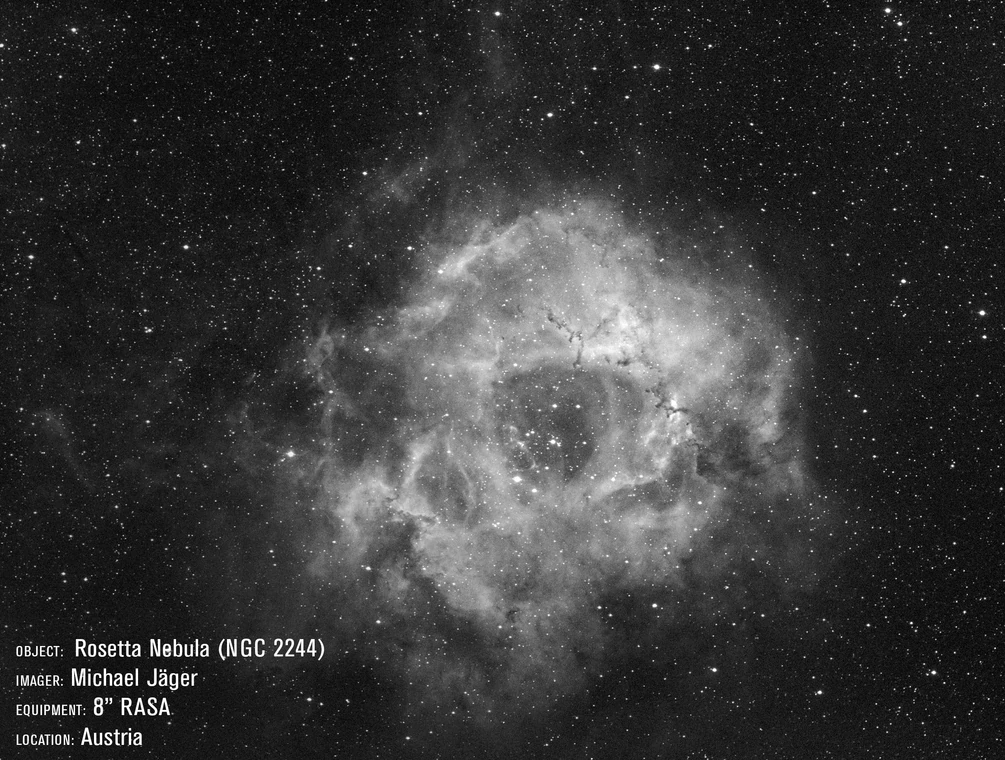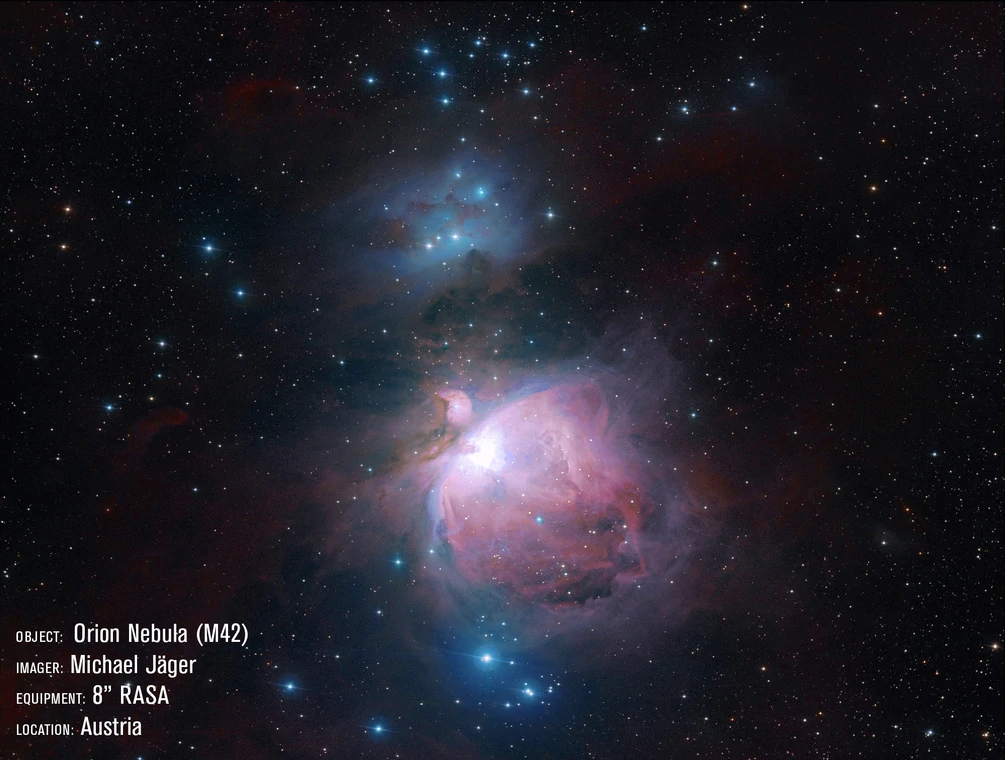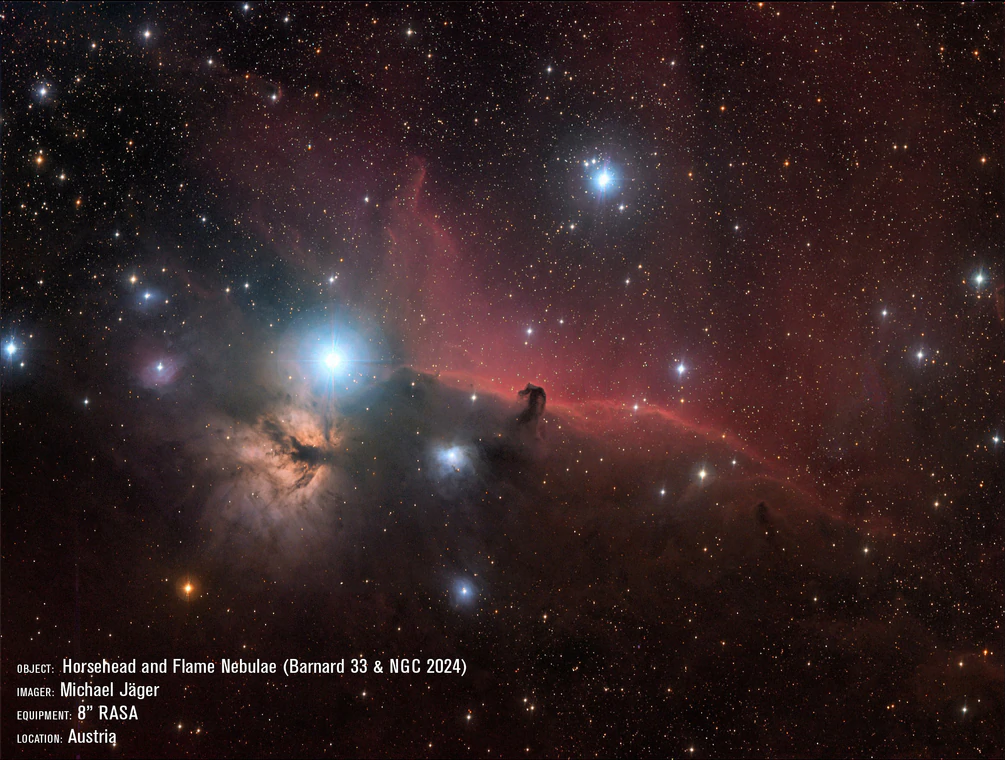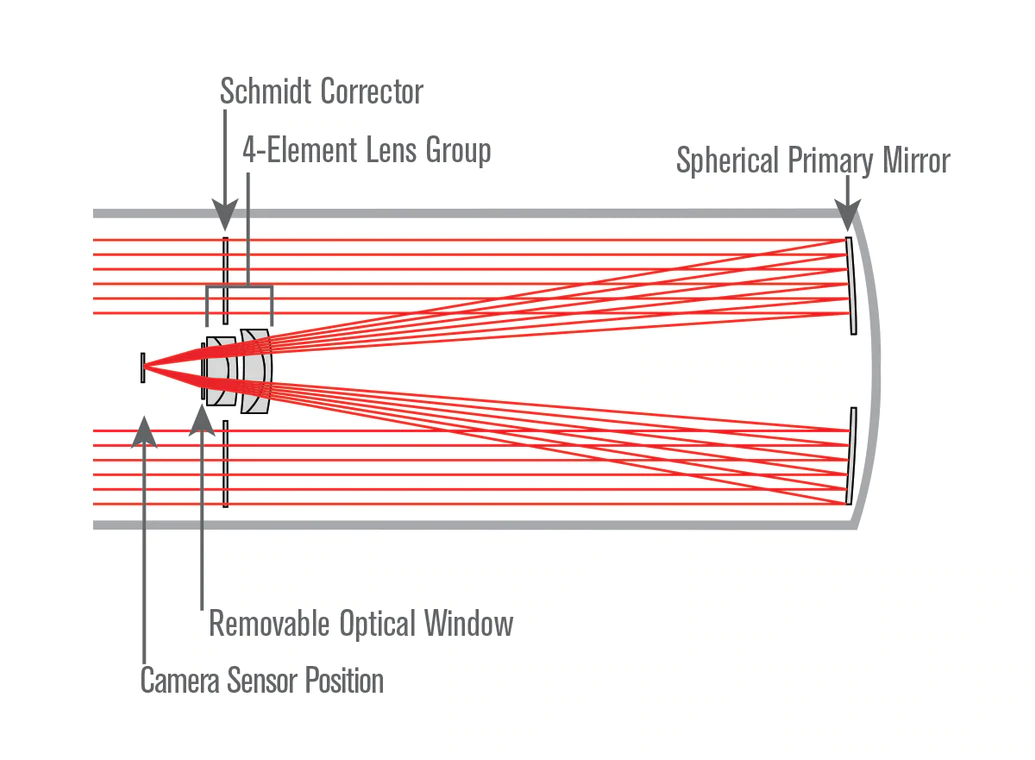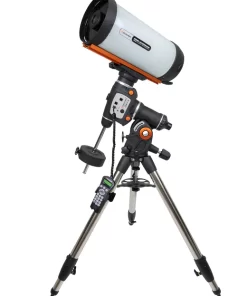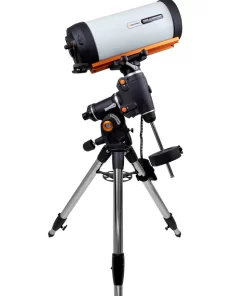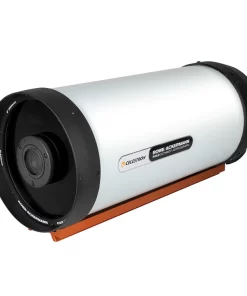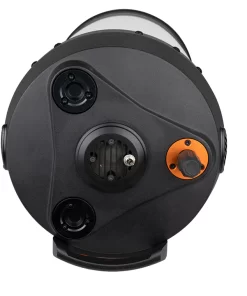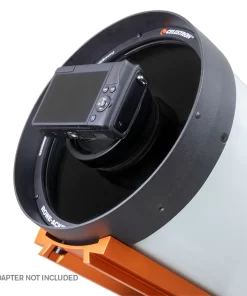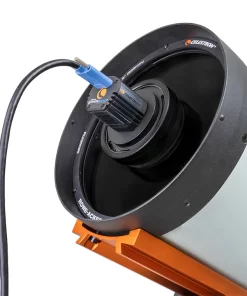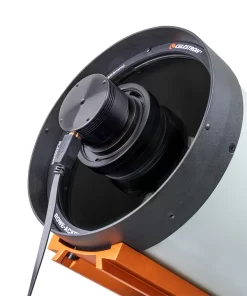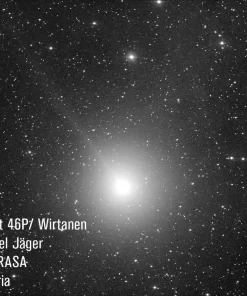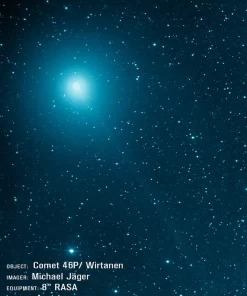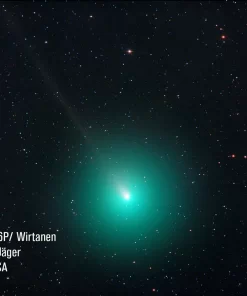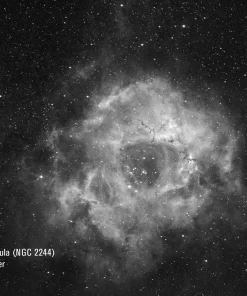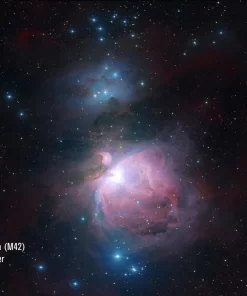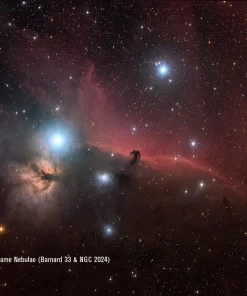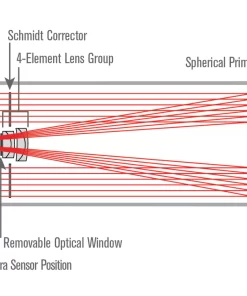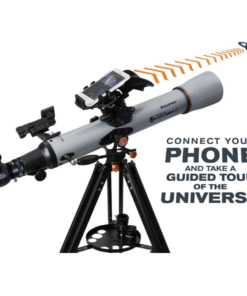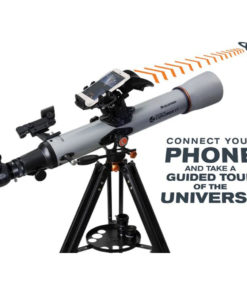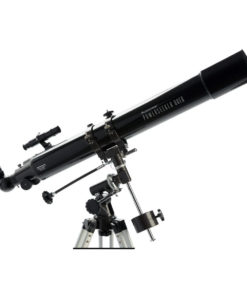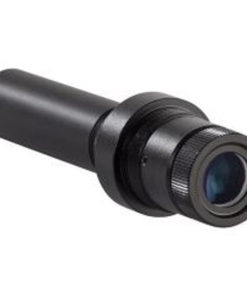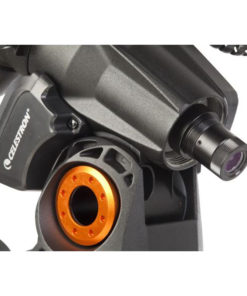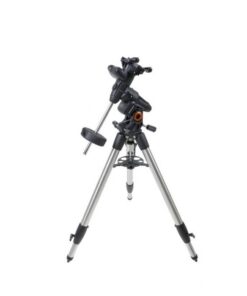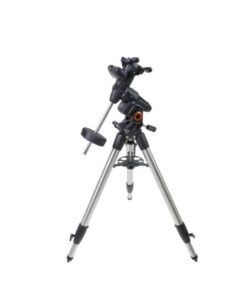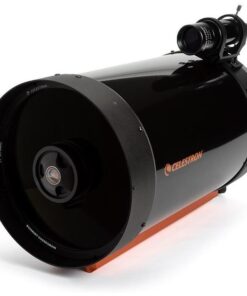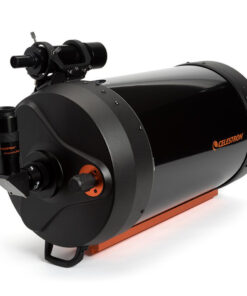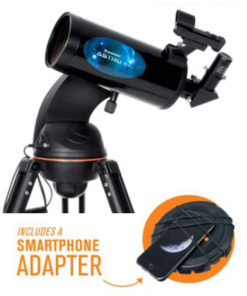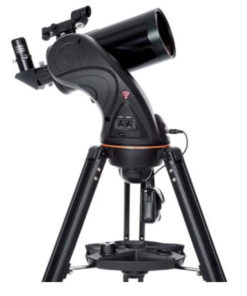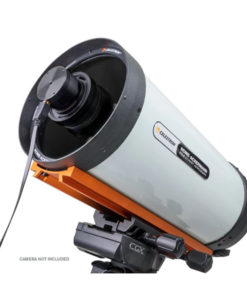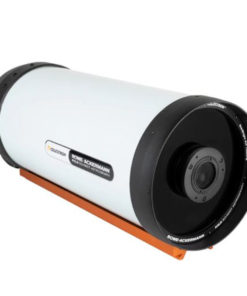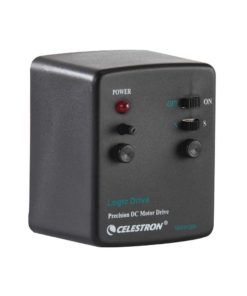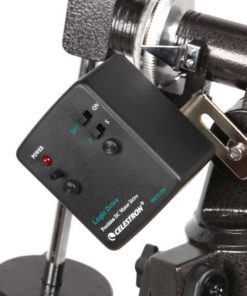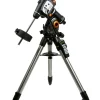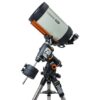CGEM II 800 ROWE-ACKERMANN SCHMIDT ASTROGRAPH (RASA) TELESCOPE กล้องโทรทรรศน์ กล้องดูดาว แบบผสม อิเควตอเรียล ระบบอัตโนมัติ
Original price was: ฿199,000.00.฿139,900.00Current price is: ฿139,900.00.
สั่งจองสินค้าได้


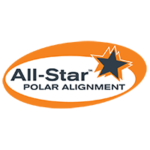
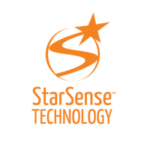
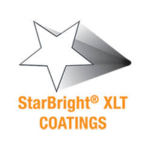
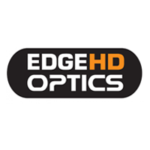
Description
การอัปเดตใหม่ล่าสุดสำหรับเมาท์ CGEM อันทรงเกียรติ CGEM II มีรูปลักษณ์ที่สดใส น่าดึงดูดใจ โดดเด่น และสามารถพกพาหลอดออปติคัล SCT ระดับไฮเอนด์ของ Celestron (สูงสุด 11 นิ้ว) ได้อย่างปลอดภัยและปราศจากการสั่นสะท้าน ซึ่งเหมาะสำหรับทั้งการถ่ายภาพและ การสังเกตด้วยสายตา สามารถรับน้ำหนักได้ 40 ปอนด์ และแกว่งไกวที่ 5° ต่อวินาที คุณจะสามารถชี้ไปที่วัตถุท้องฟ้าในฐานข้อมูลได้ทันที
การออกแบบตามหลักสรีรศาสตร์
CGEM II ได้รับการออกแบบมาให้เป็นมิตรกับสรีรศาสตร์ด้วยปุ่มปรับระดับความสูงและ Azimuth ขนาดใหญ่เพื่อการปรับแนวขั้วที่ง่ายและรวดเร็ว การเดินสายมอเตอร์ RA และ DEC ภายในทำให้ดูสะอาดตาและตั้งค่าได้ง่ายและปราศจากปัญหา
นวัตกรรม
ซีรี่ส์ CGEM II มีขั้นตอนการจัดตำแหน่งขั้วโลกที่เป็นนวัตกรรมใหม่ของ Celestron ที่เรียกว่า All-Star™ All-Star อนุญาตให้ผู้ใช้เลือกดาวที่สว่าง ในขณะที่ซอฟต์แวร์คำนวณและช่วยในการจัดตำแหน่งขั้ว คุณสมบัติที่ยอดเยี่ยมอีกประการของ CGEM II ที่จะช่วยให้นักถ่ายภาพอวกาศพอใจอย่างแน่นอน คือการแก้ไขข้อผิดพลาดเป็นระยะถาวร (PEC) ซึ่งจะช่วยให้ผู้ใช้สามารถฝึกข้อผิดพลาดเป็นระยะ ๆ ของเฟืองตัวหนอน ในขณะที่อุปกรณ์ยึดจะเก็บบันทึก PEC ไว้
ผลงาน
สำหรับวัตถุที่อยู่ใกล้เส้นเมอริเดียน (เส้นจินตภาพที่ลากจากเหนือไปใต้) CGEM II จะติดตามผ่านเส้นเมอริเดียนอย่างดีเพื่อการถ่ายภาพอย่างต่อเนื่องผ่านส่วนที่เหมาะที่สุดของท้องฟ้า การเมานต์ CGEM II มีฐานข้อมูลที่แข็งแกร่งซึ่งมีอ็อบเจ็กต์มากกว่า 40,000 ออบเจ็กต์ 100 อ็อบเจ็กต์ที่ตั้งโปรแกรมได้โดยผู้ใช้ และข้อมูลที่ได้รับการปรับปรุงบนอ็อบเจ็กต์มากกว่า 200 รายการ ตัวยึด CGEM II ของ Celestron เหมาะอย่างยิ่งระหว่าง Advanced Series และ CGE Series นำเสนอการพกพาของ Advanced Series และความแม่นยำของ CGE
เมาท์เยอรมันอิเควตอเรียลพร้อมด้วยระบบคอมพิวเตอร์
CGEM II เป็นเมาท์เมาท์เยอรมันอิเควตอเรียลที่ยอดเยี่ยมของ Celestron ความสามารถค้นหาและติดตามดาว แบบคอมพิวเตอร์จะติดตามวัตถุโดยอัตโนมัติเมื่อเคลื่อนผ่านท้องฟ้ายามค่ำคืน ช่องเชื่อมต่อต่างๆของ CGEM II ประกอบด้วยพอร์ตสำหรับการควบคุมด้วยมือตัวควบคุมอัตโนมัติและพอร์ต AUX 2 พอร์ตสำหรับอุปกรณ์เสริม การควบคุมด้วยมือ NexStar + ช่วยให้คุณเข้าถึงฟังก์ชั่นทั้งหมดที่เมาท์ของคุณได้ทันที ด้วยการแกว่งอัตโนมัติและคำอธิบายเมนูนักดาราศาสตร์ทุกระดับสามารถเชี่ยวชาญภูเขานี้ได้ในการสังเกตการณ์เพียงไม่กี่ครั้ง นอกจากนี้ CGEM II ยังมีขาตั้งกล้องที่น่าประทับใจในระดับเดียวกันด้วยขาตั้งกล้องเหล็กขนาดเส้นผ่านศูนย์กลาง 2 นิ้วที่ให้ความกว้างเป็นพิเศษเพื่อการทรงตัวที่ดีขึ้น
ความแข็งแรงและการรองรับน้ำหนัก
ความแข็งแรงและการรองรับน้ำหนักสำหรับ CGEM II คือ 40 ปอนด์ หรือ 18 กิโลกรัม โดยมีแพลตฟอร์มที่ทนทานการวางตัวกล้องดูดาว CGEM II มีความแข็งแรงแม้ว่าจะจับคู่กับอุปกรณ์เสริมเช่น StarSense AutoAlign, Focus Motor, finderscope และกล้องก็ตาม ความสามารถในการบรรทุกของ Celestron ได้เป็นอย่างดี (ไม่รวมน้ำหนักของถ่วง)
ระบบฐานรอง Dual saddle plate
เมาท์ CGEM II มีแผ่น Dual saddle plate ที่รองรับทั้งแบบ CG-5 และแบบ CGE การสลับระหว่างแผ่นเพลททั้งสองทำได้ง่ายเพียงแค่เลื่อนลูกบิดมือเข้าไปในรูแยกชุด คุณสามารถใช้เมาท์ CGEM II กับกล้องดูดาวแทบทุกชนิดที่มีน้ำหนักไม่เกินขีด จำกัด เข้ากันได้กับรูปแบบ Vixen ประกบกัน 100 มม. ขึ้นไป
ซอฟต์แวร์ควบคุมกล้องโทรทรรศน์ Celestron PWI
สุดยอดชุดซอฟต์แวร์ดาราศาสตร์ของคุณ
กล้องโทรทรรศน์คอมพิวเตอร์ Celestron ในปัจจุบันทั้งหมดประกอบด้วย Celestron PWI (CPWI) ซึ่งเป็นชุดซอฟต์แวร์ดาราศาสตร์ที่ทันสมัยที่สุดที่มาพร้อมกับกล้องโทรทรรศน์สำหรับผู้บริโภคทุกรุ่น ผู้เชี่ยวชาญของ Celestron ได้ร่วมกันพัฒนา CPWI กับวิศวกรของ PlaneWave Instruments ผลลัพธ์ที่ได้คือโซลูชันแบบออล – อิน – วันที่นำเสนอคุณลักษณะเดียวกันกับที่ใช้กับกล้องโทรทรรศน์ระดับหอดูดาวของ PlaneWaveอินเทอร์เฟซท้องฟ้าจำลองแบบกราฟิกพร้อมการสร้างแบบจำลองการติดตั้งขั้นสูง PointXP ช่วยให้คุณสามารถเพิ่มจุดมากกว่า 100 จุดให้กับโมเดลการจัดตำแหน่งของคุณเพื่อการชี้และติดตามที่แม่นยำที่สุด
เหมาะอย่างยิ่งสำหรับการตั้งค่าหอสังเกตการณ์ระยะไกล: บันทึกและโหลดการจัดตำแหน่งของคุณใหม่และกำหนดขอบเขตของคุณ
มีอินเทอร์เฟซกล้องโทรทรรศน์ ASCOM ที่สมบูรณ์เพื่อให้สามารถควบคุมกล้องโทรทรรศน์จากแอปพลิเคชันซอฟต์แวร์ของบุคคลที่สาม
ซอฟต์แวร์ Starry Night
รวมอยู่ในการซื้อของคุณคือการดาวน์โหลดซอฟต์แวร์ Celestron’s Starry Night Special Edition ฟรี ซอฟต์แวร์ขั้นสูงนี้โดย Simulation Curriculum นำเสนอข้อมูลโดยละเอียดเกี่ยวกับวัตถุท้องฟ้าและช่วยคุณวางแผนการสังเกตการณ์หรือถ่ายภาพครั้งต่อไป ซอฟต์แวร์ Special Edition ยังช่วยให้คุณควบคุมกล้องโทรทรรศน์ผ่านคอมพิวเตอร์
Description
This kit combines the 8” Rowe-Ackermann Schmidt Astrograph (RASA) with the CGEM II EQ mount. Simply add a camera and this package offers everything you need to take spectacular images of wide-field deep sky objects.
RASA Performance Made for Everyone
Capture spectacular wide-field deep sky images in seconds with Celestron’s portable astrograph, the 8” Rowe-Ackermann Schmidt Astrograph (RASA). This incredibly fast f/2.0 system is the perfect companion to today’s color astronomical CMOS cameras, smaller CCD cameras, and mirrorless cameras. Thanks to its fast focal ratio and patented optical design, you can produce sharp, detailed images and, in many cases, skip the autoguider completely. Weighing in at just 17 pounds, it’s easy to transport your 8” RASA to the most remote dark sky locations.
The 8” RASA is an imaging telescope that delivers a flat field without optical aberrations for razor sharp stars across a wide field of view. It can capture stunning deep-sky astronomical images without the challenges typically presented by longer focal length instruments at a fraction of the cost of those systems.
The latest addition to the RASA family, this 8” version is a much more portable and affordable version of the heralded RASA 11, which was introduced to much acclaim in 2014. With the 8” RASA joining the lineup, a wider range of astroimagers can enjoy the benefits of the RASA design. It has many of the same thoughtfully designed features as its “big brother” RASA 11, including the integrated air-cooling system, internal filter mount, and sturdy CGE dovetail mounting bar.
Purely designed for imaging, the 8” RASA cannot be used visually. The prime focus focal plane is located at the front of the optical system, so it cannot accommodate a traditional eyepiece.
Shorter Exposure Times and Virtual “Real-Time” Observing
Since it is an F/2.0 optical system, imagers can use shorter exposure times to capture detail in faint objects. When combined with sensitive cameras and the proper “live stacking” software, the 8” RASA can provide an almost real-time observing experience. View images on a computer instantly that are brighter and more detailed than can be seen in much bigger telescopes with the naked eye.
Ultra-Stable Focus System
With the launch of the 8” RASA, Celestron is unveiling a focuser design that mitigates lateral movement of the primary mirror when focusing, slewing, or tracking with the astrograph. Focusing is easier, more accurate, and more stable than ever. The key to the Ultra-Stable Focus System is a precision linear ball bearing, which is tested during assembly to ensure optimal results.
Built for Today’s Latest Cameras
Unlike the larger RASAs that work with DSLR and large CCD cameras, the 8” model was designed with color astronomical CMOS cameras, smaller CCD cameras, and mirrorless cameras in mind. The telescope does not work with standard DSLR cameras. It is optimized for sensors with up to a 22mm diagonal, but performs well with sensors up to 32mm diagonal. The APS-C sized sensors used in many mirrorless cameras are a good choice. 42mm full frame sensors will also work, but performance will be poor at the edges of the sensor and field illumination will be reduced. Additionally, we do not recommend pairing RASA 8 with any camera body more than 4” in diameter. See the chart below to determine if your camera is compatible with RASA 8.
| Camera | Compatible with RASA 8? | Adapter required |
|---|---|---|
| Astronomical CMOS/CCD camera with C-mount | Yes | C-mount adapter (included) |
| Astronomical CMOS/CCD camera with M42-thread mount | Yes | M42 adapter (included) with M42 extension tubes (not included) |
| Astronomical CMOS/CCD camera with other mount | Yes | Custom camera adapter |
| Canon mirrorless with APS-C sensor | Yes | Canon mirrorless adapter
(sold separately) |
| Sony mirrorless with APS-C sensor | Yes | Sony mirrorless adapter
(sold separately) |
| Canon mirrorless with full frame (42mm) sensor | Yes, but not optimized across the full sensor | Canon mirrorless adapter
(sold separately) |
| Sony mirrorless with full frame (42mm) sensor | Yes, but not optimized across the full sensor | Sony mirrorless adapter
(sold separately) |
| DSLR | No | — |
Unique Optical Design
RASA’s optical design is patented (US 2016/0299331 A1). The design consists of a Schmidt corrector, primary mirror, lens group, and optical window. The lens group contains 4 elements and utilizes rare-earth elements. Unlike many telescopes that only perform well over the visible spectrum (400-700nm), the 8” RASA’s optics are designed to perform over a wider spectral range, from 400-800nm. This allows more of the light emitted from the astronomical object to be sharply focused in the image.
With many imaging systems, adding an extra piece of flat glass such as a filter does not change optical performance. However, that is not the case with super-fast optical systems like the RASA. Our engineers addressed this by designing the RASA with a removeable optical window, so you can maintain peak optical performance if a filter is added or if a camera has its own optical window. Celestron offers a Light Pollution Imaging Filter designed specifically for the 8” RASA, which mounts in place of the optical window.
All refractive optical surfaces are coated with StarBright XLT coatings, while the primary mirror uses enhanced aluminum coatings. This maintains high light transmission through the entire optical system.
When compared with “Hyperstar SCT” systems, the RASA 8 provides better optical performance and field illumination.
CGEM II: An Excellent Platform for RASA
CGEM II is a sturdy equatorial mount capable of rigidly supporting the 8” RASA. Its 40 lb load capacity can handle the 17 lb optical tube with ease, leaving lots of capacity to spare for your camera and any accessories. The heavy-duty adjustable height tripod has 2” diameter steel tripod legs with graduated markings that make it easy to extend the legs to the same height. The 8” RASA connects directly to the CGEM II with its CGE dovetail mounting bar.
The mount is packed with functionality and conveniences that make imaging with the 8” RASA easy. The fully computerized mount will automatically “GoTo” any of the 40,000+ astronomical objects selected from the NexStar+ hand controller’s database and automatically track the object as it appears to move across the night sky.
Designed with imaging in mind, the CGEM II motor drive system accurately tracks during an exposure. At the heart of the system are low cog DC servo motors with integrated optical encoders. The low cog design helps the motors run smoothly, while the integrated optical encoders provide accuracy. The motors turn steel worm gears, which are supported by precision bearings, against brass worm wheels. These components also help to make the motor drive system operate smoothly and accurately.
To track objects in the night sky, the mount must first be polar-aligned. Celestron makes this process easier than ever with the innovative All-Star Polar Alignment procedure. No extra equipment, such as a polar finder scope, is required. (An optional polar alignment finder scope is available if desired.) Best of all, the alignment can usually be completed in about 15 minutes, even without a clear view of Polaris.
All mounts have some amount of “periodic tracking error” inherent in them caused by tiny gear imperfections. To mitigate this, the CGEM II has Permanent Periodic Error Correction (PPEC). This allows you to run a routine to record the periodic errors only once; the recording is kept in memory, and subsequently corrects for the mount’s periodic tracking error. If an even higher level of tracking accuracy is desired, the CGEM II also has a dedicated autoguider port to connect an autoguiding camera directly to the mount to correct for any residual tracking errors.
Conditions for imaging are best when celestial objects are at their highest point in the sky with the darkest background, called the meridian. But some German equatorial mounts have trouble tracking near the meridian because they need to perform a “meridian flip,” readjusting their position to avoid the tube striking the mount. CGEM II does not suffer from this problem, imaging through the meridian with ease and not requiring a meridian flip until the object is a full 20° past the meridian.
The NexStar+ also has dozens of other functions to control every aspect of the mount’s behavior. These include:
- Multiple ways to align the mount to the night sky
- Adjustable slew rates up to 5°/second
- Northern or Southern hemisphere compatibility
- Adjustable autoguiding rates
- Hibernate mode so the mount can be powered down without loss of alignment
- Continual firmware development, with new features added regularly
In addition to the autoguider port, the CGEM II also has other ports to enhance and expand the capabilities of the mount. The hand controller has a USB 2.0 port for those who wish to control the mount with an external computer and optional third-party software. There is an AUX port on the mount that can support optional accessories such as StarSense AutoAlign.
When imaging, cable management can be a problem. The camera has a cable, the mount’s power source has a cable, and additional cables can come from a computer connection and augtoguider. To minimize cable management issues and prevent unwanted snags, all cabling for the mount is housed internally. This also eliminates the need to connect or disconnect an external Dec. motor cable when the mount is set up or broken down.
Transporting the entire system to a dark site is not a problem either. The optical tube, mount head, tripod, counterweight bar, and counterweight all disassemble, with no tools required, into separate manageable pieces.
In summary, the CGEM II and RASA 8 work well together to attain stunning imaging results with minimal hassle. It’s the perfect kit for those who want to take the next step into deep-sky astroimaging.
Specification
CGEM II 800 ROWE-ACKERMANN SCHMIDT ASTROGRAPH (RASA) TELESCOPE กล้องโทรทรรศน์ กล้องดูดาว แบบผสม อิเควตอเรียล ระบบอัตโนมัติ
| OPTICAL TUBE INFO: | |
|---|---|
| Optical Design: | Rowe-Ackermann Schmidt Astrograph |
| Aperture: | 203mm (8″) |
| Focal Length: | 400mm (15.74″) |
| Focal Ratio: | f/2.0 |
| Central obstruction diameter: | 93mm (3.66″) (46% of aperture diameter) |
| Light Gathering Power (Compared to human eye): | 843x |
| Resolution (Rayleigh): | 0.68 arc seconds |
| Resolution (Dawes): | 0.57 arc seconds |
| Image Circle: | 22mm (.86″) Ø, 3.15° |
| Useable field: | 32mm (1.26″) Ø, 4.6°, only minimal performance loss at edge of FOV |
| Wavelength range: | 400 – 800 nm |
| Spot size: | < 4.6 μm RMS across image circle |
| Optical Coatings: | StarBright XLT |
| Off-axis Illumination: | 93% at 11mm (.43″) off-axis |
| Optical Window: | 46mm (1.81″) Ø |
| Back focus with included camera adapter: | 25mm (.98″) |
| Back focus from top of threaded collar: | 29mm (1.14″) |
| Optical Tube: | Aluminum |
| Optical Tube Length: | 628mm (24.7″) |
| Optical Tube Diameter: | 235mm (9.3″) |
| Focuser: | Ultra-Stable Focusing System |
| Finderscope: | Not included |
| Optical Tube Weight: | 17 lbs (7.7 kg) |
| Other Features: | Air-cooling system, integrated filter mount |
| Included items: | M42 camera adapter, C-thread camera adapter, fan battery pack |
| Dovetail: | CGE Dovetail Bar |
| MOUNT INFO: | |
| Mount Type: | Computerized Equatorial |
| Instrument load capacity: | 40 lbs (18 kg) |
| Height adjustment range (includes mount and tripod): | 1346mm – 1651mm (53″ – 65″) |
| Tripod Leg Diameter: | 50.8mm (2″) Steel tripod with graduated markings on lower section |
| Latitude adjustment range: | 15° – 70° |
| Mount Head Weight: | 40 lbs (18.14 kg) |
| Accessory Tray: | Yes |
| Tripod Weight: | 20 lbs (9 kg) |
| Weight of Counterweights: | 1 x 17 lbs |
| Slew Speeds: | 9 slew speeds – max speed 4.5°/second |
| Tracking Rates: | Sidereal, Solar and Lunar |
| Tracking Modes: | EQ North and EQ South |
| GPS: | N/A |
| Dovetail Compatibility: | Dual saddle plates (CG-5 and CGE saddle) |
| Number of Auxiliary Ports: | 2 AUX Ports (1x Hand control Port and 1x AUX Port for optional accessories) |
| Autoguide Port: | Yes |
| USB Port: | Yes, input on Hand Control |
| Power Requirements: | 12V DC, 3.2 amps |
| Motor Drive: | DC servo motors |
| Alignment Procedures: | 2-Star Align, 1-Star Align, Solar System Align, Last Alignment, Quick Align |
| Periodic Error Correction: | Yes |
| Computerized Hand Control: | 2 line x 18 character backlit Liquid Crystal Display, 19 LED backlit buttons, USB 2.0 Port for PC connection |
| NexStar+ Database: | 40,000+ objects, 100 user defined programmable objects Enhanced information on over 200 objects |
| Software: | Celestron Starry Night Special Edition Software and SkyPortal App |
| Total Kit Weight: | 95 lbs (43 kg) |
| Included Items: | CGEM II Equatorial Head Tripod Accessory Tray 1 x 17 lbs counterweight NexStar+ Hand Control DC Power Cable (item#18769) Hand Control Holster |
| Solar Warning |
|
